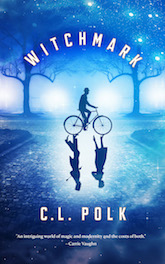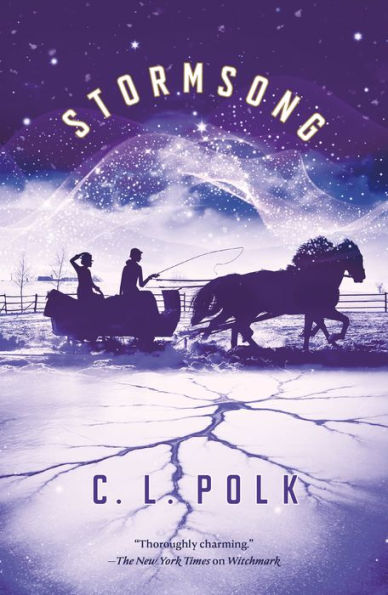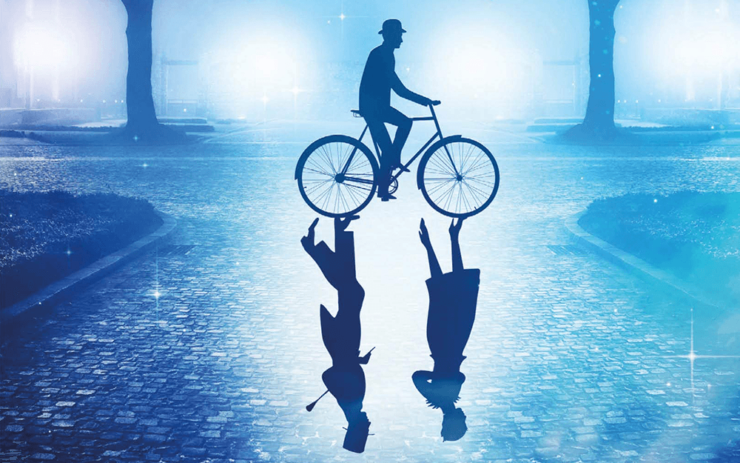C. L. Polk’s fantasy series The Kingston Cycle—including Witchmark and the forthcoming Stormsong—is set in an original world that loosely resembles our own around the turn of the 20th century. Kingston, the capital city in which the story unfurls, is an old town on the brink of transformation by recent inventions, bright lights and modern applications electrified by the new national Aether network. Below, Polk describes the fictional history of this booming era’s favorite method of commuting: the bicycle.
Combining magic, mystery, intrigue, and romance, Witchmark is available now from Tor.com Publishing—its sequel, Stormsong, arrives February 11th.
The City of Bicycles
Kingston has 2.1 bikes for every citizen over the age of eight—the legal age to cycle alone. How did it succeed?
Is there anything more emblematic than the apples of Kingston? The City of Apples has long celebrated its trees growing along almost every public street, their fruits free for the taking come harvest season. But the iconic bicycle could take the apple’s place a mere fifty years after its invention. It’s hard to believe the bicycle almost failed, saved by a film that made it a powerful symbol of modern womanhood, bringing with it convenience, independence, and romance.
Buy the Book


Witchmark
An Unanswered Need and A Child’s Toy, Re-Visioned
Kingston is a finger pointing from east to west, bordered on the south by the Blue River and the Ayers Inlet on the north. Boasting only one East to West commuter train with a single stop in West Kingston, East Kingstonites didn’t have easy access to the affluent western half of the city…which is exactly what the citizens of West Kingston thought they wanted. But when thousands of people swarmed out of Kingston Terminus to find a seat on privately owned taxi carriages, or else walk eight miles to serve in busy firms, elegant department stores, or in the homes of the wealthy, traffic in West Kingston became known as The Great Constipation. You could barely move a carriage in the morning to get to parliament! An outrage! A disgrace! Someone ought to do something! You could move faster on a wheel-horse!
That part was almost true. A wheel-horse was a popular toy of the time, ridden in East and West Kingston alike. While only the wealthy could afford the costs and upkeep of horses, children scooted around on wooden horse tricycles while playing in the streets, risking broken limbs to guide their free-wheeling steeds downhill. One mother meant to find a way to make wheel-horses safer. Letitia James took her concept drawings to her machinist neighbor, Arnold Green, and together they created the front-wheel pedal and the hand-caliper brake.
Soon James & Green Toys shipped their pedal horses all over Aeland. Another neighbor came to them for a loan to develop an innovation based on their popular toys. Seeing the possibilities, Arnold Green poured every mark he had made into the adult-sized steel chain-driven vehicles, and formed a new company with boilermaker Silas Forest, offering bicycles to the public.
Almost a Flop
Bicycles were peculiar. They were outlandish. They were expensive, and traveling up hills was a sweating, mighty effort. Silas Forest developed a shifting gear system to compensate, but it was almost too late. Even after a trade agreement brought the cost of rubber tires down, the bicycle served an obscure niche of fitness-inspired young men, and Arnold and Silas’ venture was gasping its last breath.
But then a glamorous customer from another innovative industry made an order for two dozen cycles. Agnes Baker wanted bicycles for her cinema series about six young women embracing freedom and romantic possibilities in their first year as students at university. Forest & Green used the money to continue buying advertisements in the Kingston Daily Star, listing the advantages of the bicycles no one wanted to buy…
Until the risque, sexy films about The Sisterhood of Sparrow Hall put Aeland on its ear. The free, glamourous, and independent women who found love and happiness on screen started a craze with wealthy young women. Frustrated by the delays and restrictions of travelling by carriage, the daughters of middle-class families saw a way to go where they wanted, when they wanted, without depending on anyone else. They wanted bicycles. And they wanted them now.
Buy the Book


Stormsong
The Sexual Revolution Rides on Two Wheels
Letitia James lent her former partners a space in her Wellston Triangle toy shop to take orders. When she learned how badly off they were, she bought into the company as a silent partner. The first thing she did was design new advertisements. Instead of cramped, wordy pleas to buy, she illustrated posters of beautiful women on bicycles traveling alone or romantically paired with another rider… and those partners were often women. The bicycle became a symbol of female independence and empowered sexuality—a woman on a bicycle was her own person. Sales went wild.
“Out pedaling” became a euphemism for sexual activity. “Sisterhood” was code for women who enjoyed romance with other women. Posters of women on bicycles hung in cafes and saloons that provided a social space for women with same sex romantic interests. And with women taking to the bicycle, men soon followed… to pursue women, or each other. Young people on bicycles were flashy, risque, and fun, and that image drove sales to the point of frenzy.
The ease and convenience of riding soon had people wondering why they had never tried it before. This time the city was quick to serve the needs of the population, instituting road safety examinations and operator licences to riders as young as eight years old. Four years after The Sisterhood of Sparrow Hall’s premiere, a quarter of a million riders traveled to work on bicycles. Two years after that, the number jumped to half a million.
Today, the average Kingstonite owns two bicycles in good working order, typically a commuting bike and a cargo tricycle, only pausing long enough to change to studded ice tires in winter. Their first dates with sweethearts probably started with a bicycle ride to the fair or the ice-cream parlor, taking scenic routes through parks and past the Palace. Hardly anyone remembers the quaint old films that made the pedal cycle popular with girls who rode to secret places to share kisses with a dear friend. But the emergence of the bicycle as a symbol of female sexuality is still seen in the logos and decorations on today’s bicycles—the venerable and original Forest & Green’s front badge is of two women in profile, close enough to kiss.










